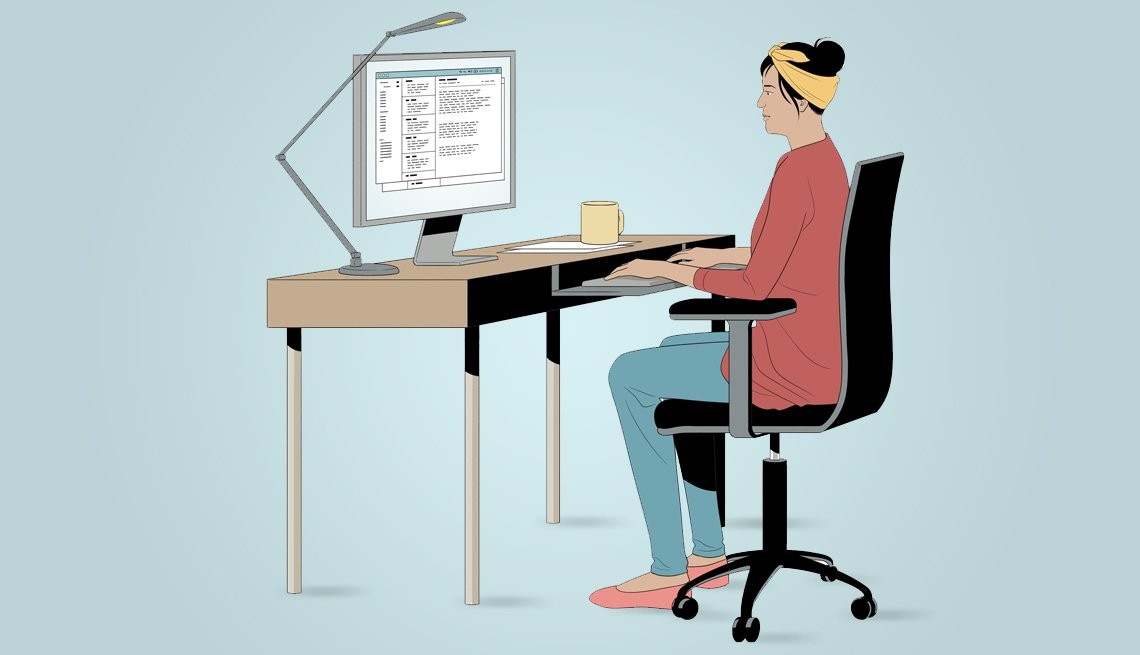
AARP: How to improve your pandemic posture
UC expert offers tips on monitor positioning and workspace lighting
Working in the pandemic over the last two years has meant developing a space to work at home for most of us. An article published by AARP takes a look at some potential problems that can crop up working at home in the way of pandemic posture habits. Susan Kotowski, PhD, of the Department of Rehabilitation, Exercise and Nutrition Sciences in the UC College of Allied Health Sciences, is cited as an expert for the story.

Susan Kotowski, PhD, of the Department of Rehabilitation, Exercise and Nutrition Sciences in the UC College of Allied Health Sciences/Photo/Colleen Kelley/UC Creative + Brand
The top edge of your screen should be directly in line with your eye level, Kotowski told AARP. If it’s too low, you’ll hunch over, creating neck pain. If you use dual monitors, put the most-used monitor directly in front of you.
Aging eyes need more light than younger ones. Kotowski recommends task lighting — an individual light, such as a reading or desk lamp, that you can aim at a specific spot.
The article also mentions the importance of setting the correct desk height. With your chair at your work surface, you should be able to comfortably maintain the recommended 90-degree angles. If your desk is too high, add an ergonomic step stool under your desk to rest your feet on. If it’s too low, use furniture risers to raise it.
Lead image/Anuj Shrestha
Next Lives Here
The University of Cincinnati is classified as a Research 1 institution by the Carnegie Commission and is ranked in the National Science Foundation's Top-35 public research universities. UC's medical, graduate and undergraduate students and faculty investigate problems and innovate solutions with real-world impact. Next Lives Here.
Related Stories
UC College of Nursing Professor honored with AANA education excellence award
December 23, 2025
Susan Newell, assistant professor in the UC College of Nursing, is being recognized by the American Association of Nurse Anesthesiology (AANA) as one of three top educational administrators and instructors. She will receive the Clinical Instructor of the Year Award during AANA's top educator event 2026 EDGE Conference, February 4-7 in Louisville, Kentucky.
Supporters give generously to the Bearcats Pantry and Resource Center
December 22, 2025
Supporters gave generously to the Bearcats Pantry and Resource at the University of Cincinnati during two fundraisers: the Crosstown Foodout and Giving Tuesday.
Fusion reactors may be key to uncovering dark matter
December 22, 2025
Yahoo! News highlights a new study by University of Cincinnati physicist Jure Zupan that explains how fusion reactors might create subatomic particles associated with dark matter.
